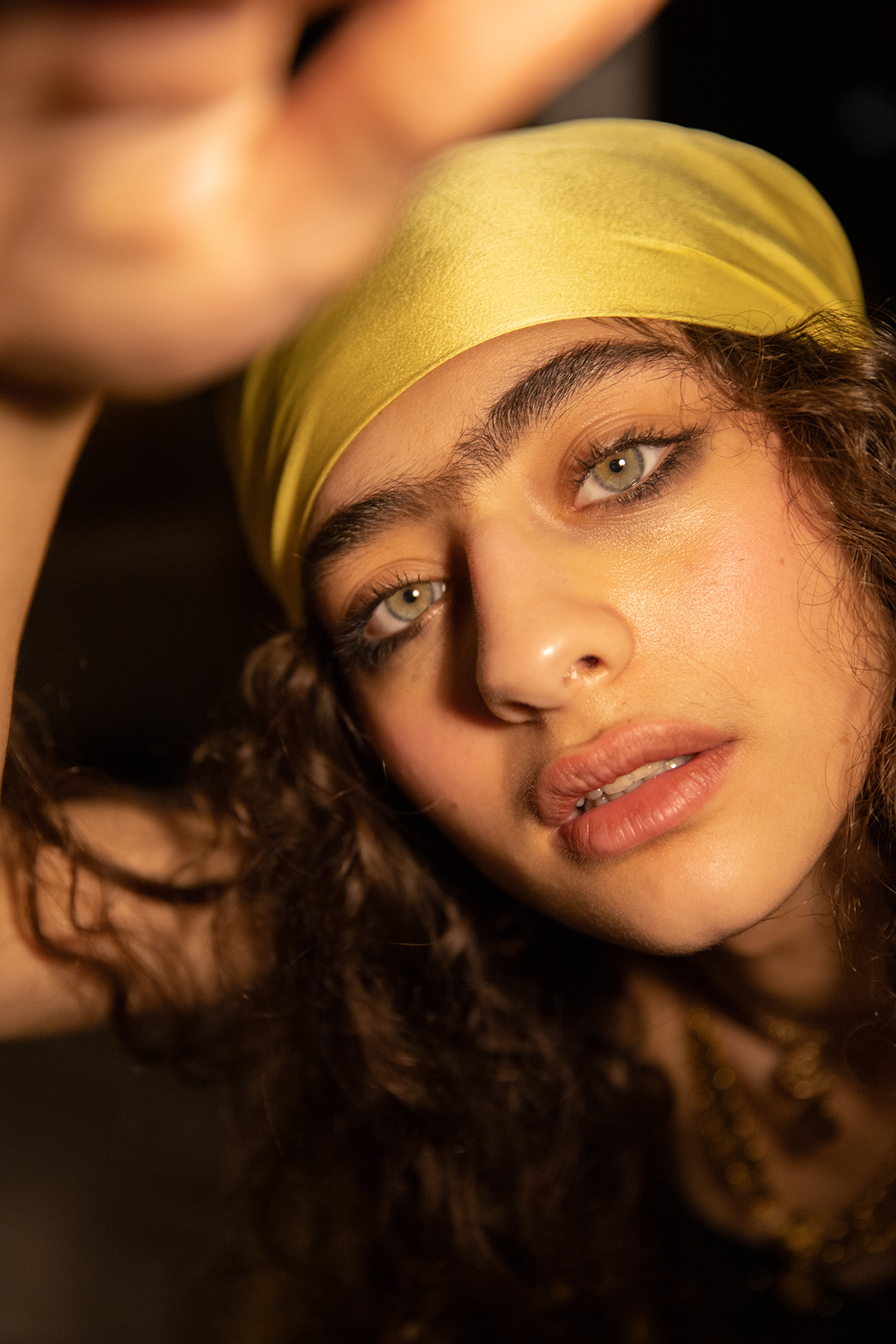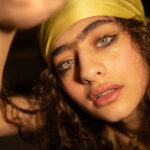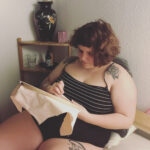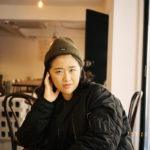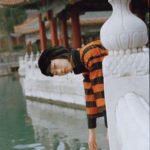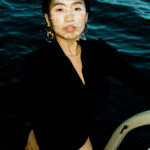Hey gxrls! Can you tell us a little bit about yourselves? Deba: Helloooo, I’m Deba,…
Radical Beauty
Faces of Womanhood from the MENA Region1 December 2020
Finding beauty and pride in your culture and ethnicity is a complex topic for those who come from non-western backgrounds and have been raised in the west. Three friends from Cardiff, Wales, who have all shared this experience - Arwa, Deba, and Sally - decided to approach this topic by exploring and embracing middle eastern beauty first through portraits of Deba in a series of intimate photos called "My Culture" and next with a studio project called "MENA-hood", featuring models Khody and Lena. We sat down with the trio to discuss what inspired the shoot, the role of cultural sensitivity in artistic practice; and what life in Cardiff is like for the BIPOC community.

Model: Deba
Hey gxrls! Can you tell us a little bit about yourselves?
Deba: Helloooo, I’m Deba, I’m a model and I guess I do online activism work even though I hate that word. I also work for a 360 agency where we deal with social media content and also techy brand stuff too. It’s hard to explain. I’m of Kurdish heritage, born in Sardasht, Kurdistan and raised in the UK.
Sally: Hi, My name is Sally Nguyen. I’m 19 years old and I’m a British-Born Vietnamese creative. I’m currently living in London studying Fashion Photography at London College of Fashion, but I was raised in Cardiff for most of my life. That’s where I met Arwa and Deba.
Arwa: Hi, my name is Arwa. I’m a STEM student currently living and studying in London. I’m originally from Libya. I moved to Cardiff, Wales, at the age of eight with my family. That relocation was a complete culture shock. Growing up, I saw my mum try her best to dress up modestly whilst staying fashionable and maintaining her cultural touches. Then I saw that was a common thing for so many ethnic minorities in the UK. I picked up on patterns and recurring styles that occurred in the MENA (Middle East and North African) regions and how they were infused into the western lifestyle. Growing up, I experimented a lot with my sense of dress and this led to where I am today. Being a first-generation immigrant has been a great benefit to me, in the sense that I understand and relate to a lot of cultures and their customs.
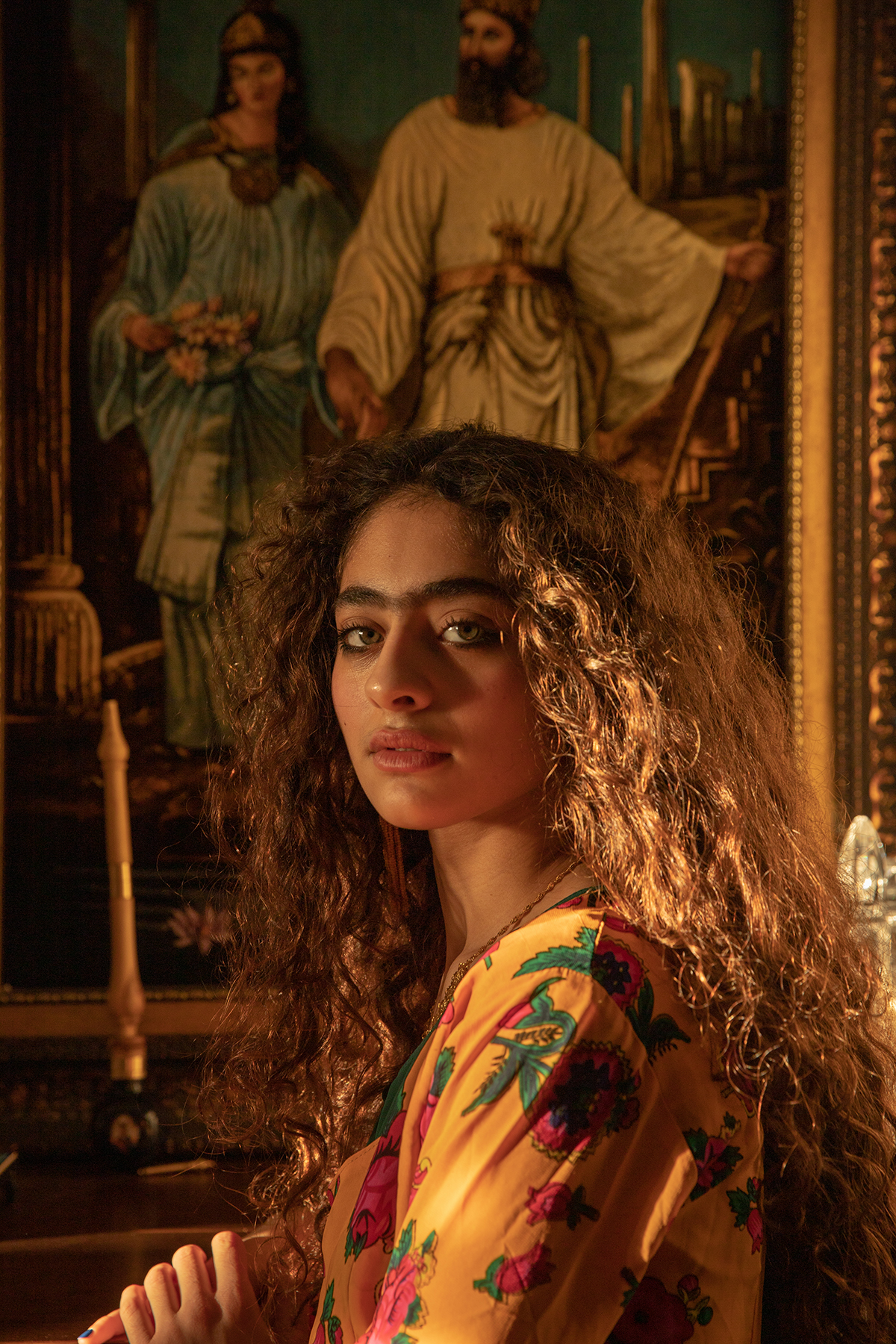
Model: Deba
How did this project come to be?
Arwa: In my gap year, I decided to work on some styling projects that were heavily focused on traditional clothing and modest wear, so Sally knew that I had an experience in this area. So when Sally had to do a university assignment on “Radical Beauty” and Deba wanted to put together a shoot focusing on middle eastern beauty with focus on Irani-Kurdish beauty, we all decided to team up.
Deba: My best friend [Sally] is a sick photographer and had a really cool concept regarding middle eastern beauty and the lack of representation in western media. Me and sally have always shared similar interests and beliefs, this [project] is just an extension of her support and how I [want to] outwardly present myself to the world as a Kurdish woman. We are the best of friends and I always have complete trust in her vision. So yeah, big love to sally.
Sally: I was given the theme of “Radical Beauty” as a part of my university project. It gave me the opportunity to analyse what “Beauty” is. It’s so different to so many different types of people and yet we have a concept of a set of beauty standards we use as a guideline. Looking back at the past, some of the features which were deemed as “ugly”, are now seen as “beautiful” and “unique”. Depending what context or time period, what we think is beautiful can be ever changing. I realised that western beauty standards have a massive impact on the idealism of beauty globally. Therefore, growing up in a predominantly white city, my features or other BIPOC’s features are seen as “not desirable”. This realisation made me want to use this project opportunity to express this idea.
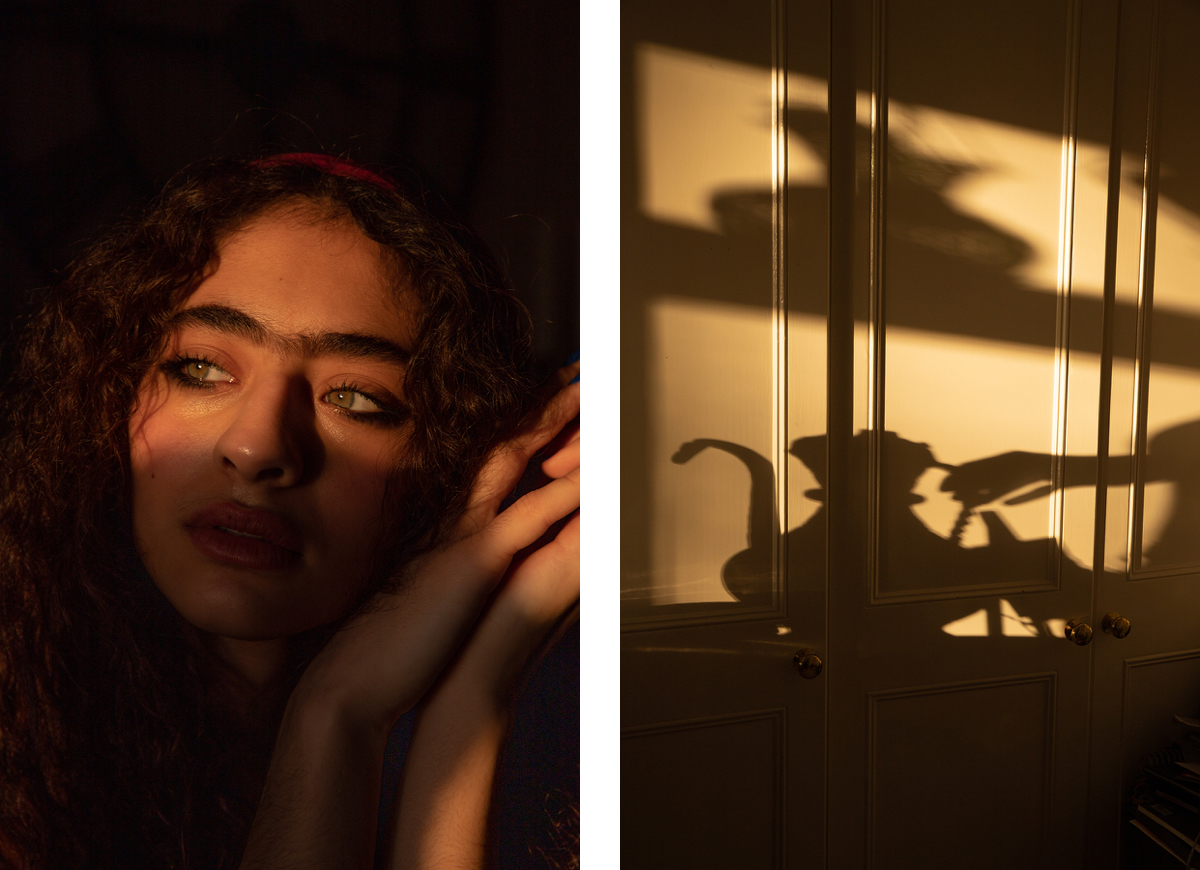
Model: Deba
What has it been like growing up in a predominantly white city (and by extension, country) as a non-white women?
Arwa: The three of us have either grown up or lived in Wales. I personally didn’t notice much of a difference in treatment or unwanted attention, until I started dressing modestly but maintained a fashionable touch. It’s as if I wasn’t allowed to dress up nicely and be modest at the same time, and I was made to feel like I was overdressing all the time. Luckily, at the point in my life I had reached a level of confidence that meant that I was phased by any comments and stares. If I think about this diplomatically, it was all coming from ignorance and lack of taste and that’s why I never took offence. However, now that there are more people like myself being expressive whilst also being modest and true to their culture, it’s no longer met with stares (or not as often).
Deba: Weird. In the masses it’s weird and I guess quite overwhelming however I’m quite lucky in the sense that me and Sally both always went to super diverse schools. I didn’t quite understand racism until people around me and my family would receive racist hatred. Since then it’s just been a constant feeling of tiredness and anticipation for when, my peers, my family, or any oppressed ethnic group will face such negativity again. As I’ve grown older I’ve understood how we can all, despite being tired and hopeless, be part of a monumentally needed force for change. Education is the key for a better future.
Sally: At first everyone assumed that I couldn’t speak English. Constant verbal aggressions such as “Ling Ling”, “China”, “Ni Hao” would be shouted at me on the streets or in my school. Not to mention the eye pulling/eye slants and racial microaggressions. I felt as though my features weren’t beautiful compared to my white peers. I grew up wishing I was white or could be re-born as white and although I was blessed to go to a primary and secondary school that was quite diverse compared to other schools in Cardiff, all of my BIPOC friends still had this silent understanding of the idea that we were still economically and socially below our white peers.
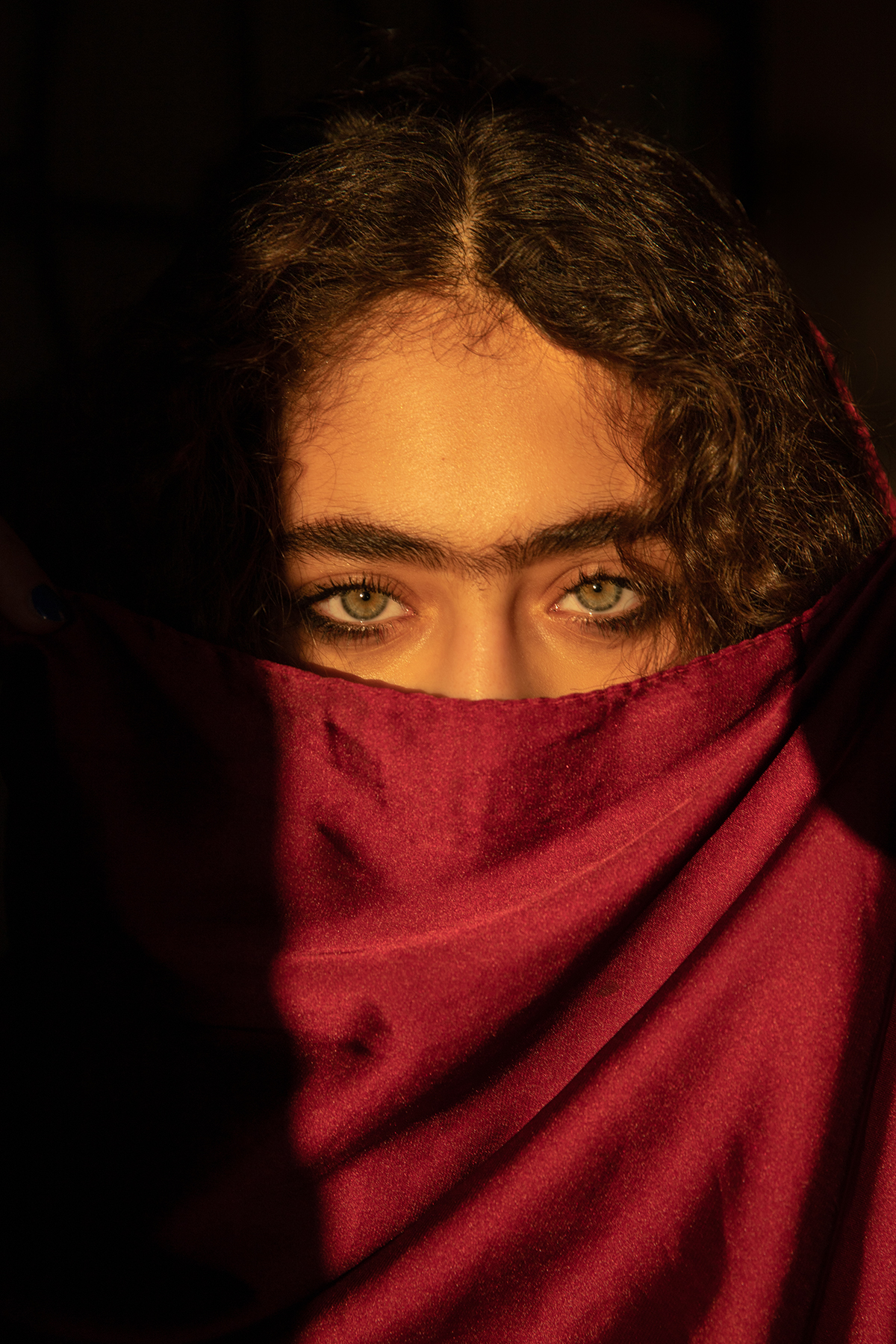
Model: Deba
Deba, your experience in high school was particularly confronting, where your outward appearance was criticised and seen as inferior in comparison to Western standards of beauty. What was this experience like for you growing up, how has this shaped yourself worth and understanding of beauty, and where are you currently on this journey?
Deba: Despite going to a diverse school, everyone had an opinion about my hair. I was a young Kurdish girl going through puberty and my people are hairy I must say, and I was constantly being put down because of a natural change. It made me upset and I felt as if even my own people didn’t like me. But it’s just young ignorance, I think. As young people, we all did have one perception of what a “Peng” girl was (slang for sexy and attractive), so I get it now. It’s just sad that we were so brainwashed into thinking that. I hate western media man ahah.

Models: Lena (left) and Khody (right)
Awra, can you tell us a bit more about your stylistic choices for this shoot?
Arwa: For this shoot, we really wanted to focus on the beauty. So, I decided to keep it simple. I wanted to keep it traditional but add some modern touches by introducing bright colours in the make-up looks rather than the classic smokey eye that the MENA region is known for. Due to the focus on Persian beauty, I opted for paisley patterns and rich aqua blues that are related to Persia, Turkey, Levant and Mesopotamia. The shoot was split into two parts, with one part at a studio and the second part being set in our friend and assistant stylist’s, Sahar Ghorishi, house. Deba’s outfits show how far cultural dress can be manipulated.
Her first look was a very simple traditional Kurdish dress and the second look was a belly dance belt worn as a crop top and the third look was her wearing a graphic t shirt with Farsi narrations and a scarf laid on her head loosely, just like its worn in Iran due to it being an obligation for all women. The beauty of it, is that it can be worn and placed whichever way one chooses too. In both parts of this shoot I focused a lot on gold toned jewellery to maintain that original middle eastern feel; as it’s a uniform tradition within that region for women to be gifted gold and for gold to be worn proudly. whatever age, social class or religion.
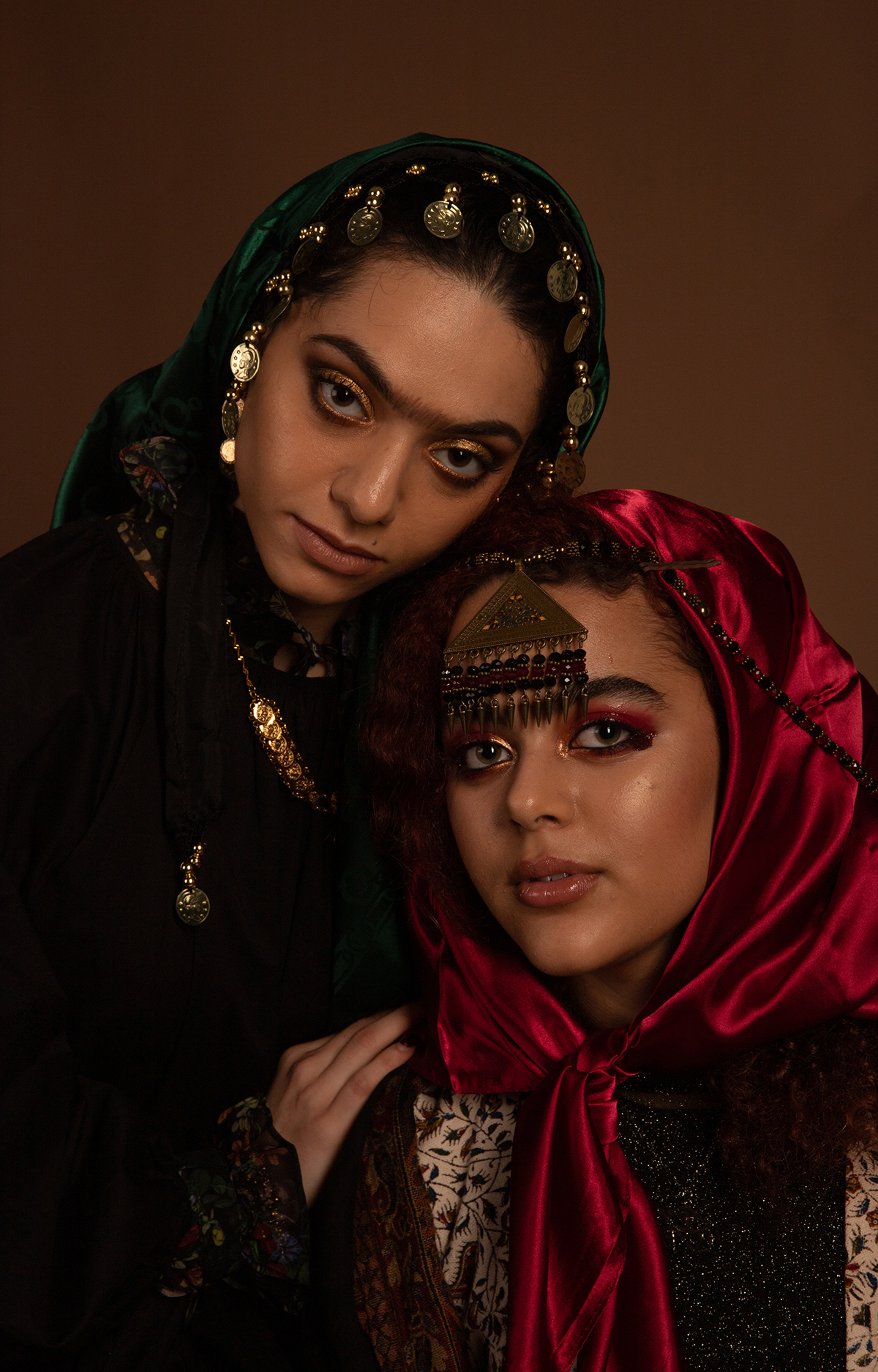
Models: Khody (left) and Lena (right)
Arwa, you and Deba both come from the MENA region and have been able to explore your own cultures through the stylistic choices you have taken in this shoot. This must have been something liberating, empowering, and celebratory for you both.
Arwa: In the last couple of years it’s been such an honour to do such work and collaborate with such amazing people. I’ve always dreamt of making beautiful art like this and I know this is just the start for myself and these girls. Growing up, I never really saw our culture being portrayed correctly in western media, let alone the beautiful depths of our varied traditional styles. So far it’s been a great experience and I can’t wait to indulge further in this field.
At the same time, the conversation about combining cultural dress into creative shoots is complex – even controversial – depending on who is doing the styling and who is wearing the clothing. Do you exclusively work on shoots with models from the MENA region? Or do you also work directly with models from other non-western backgrounds? For example, although you yourself are not Thai, would you work with a Thai model to explore her identity and culture through the traditional garments worn in Thailand? How would you feel about a white stylist doing this? What are your feelings about putting a BIPOC model in clothes from a culture both you and the model do not come from? Do these feelings change if the model is white? Does your opinion change if the stylist is BIPOC and styling with elements from their own culture?
Arwa: So this question has been playing on my mind for a while. I want to explore many other cultures outside mine, but how I do this has to be thought out properly. There’s a very fine line between cultural appropriation and cultural appreciation. For example, this shoot was focused on the MENA region, so Sally and I worked with models from that region specifically and did a casting call asking for models from that region and I picked an assistant stylist from that region. If models were not available for any reason and we were on a tight schedule, we would’ve opted for an ethnicity that was closer to the MENA region such as Balkans or South Asians because the cultures and the custom are similar in some aspects.
For future projects, I would love to work on shoots that are not from western backgrounds, but only on the grounds that I am collaborating with creatives from that culture and after doing extensive research on that specific culture (like you said with the Thai example).
In this age of cancel culture, everything can be interpreted out of context. So, if a white stylist worked on such projects, it can be met with some type of negativity. Personally, I think if this stylist is collaborating with the right people, has done enough research and casted the right models, it shouldn’t be a problem.
Putting models from BIPOC backgrounds in clothes that originate from cultures that I am not also from is something that I would prefer to avoid. It’s always more meaningful when the models understand and appreciate the clothing that they are in. We are living in times where we can find models from every culture and background and it’s always better to cast traditional styled shoots for their native wearers. This is even better for the dynamic of the shoot and the environment at the studio because it will be easier for people to relate to each other and for a rapport to be built.
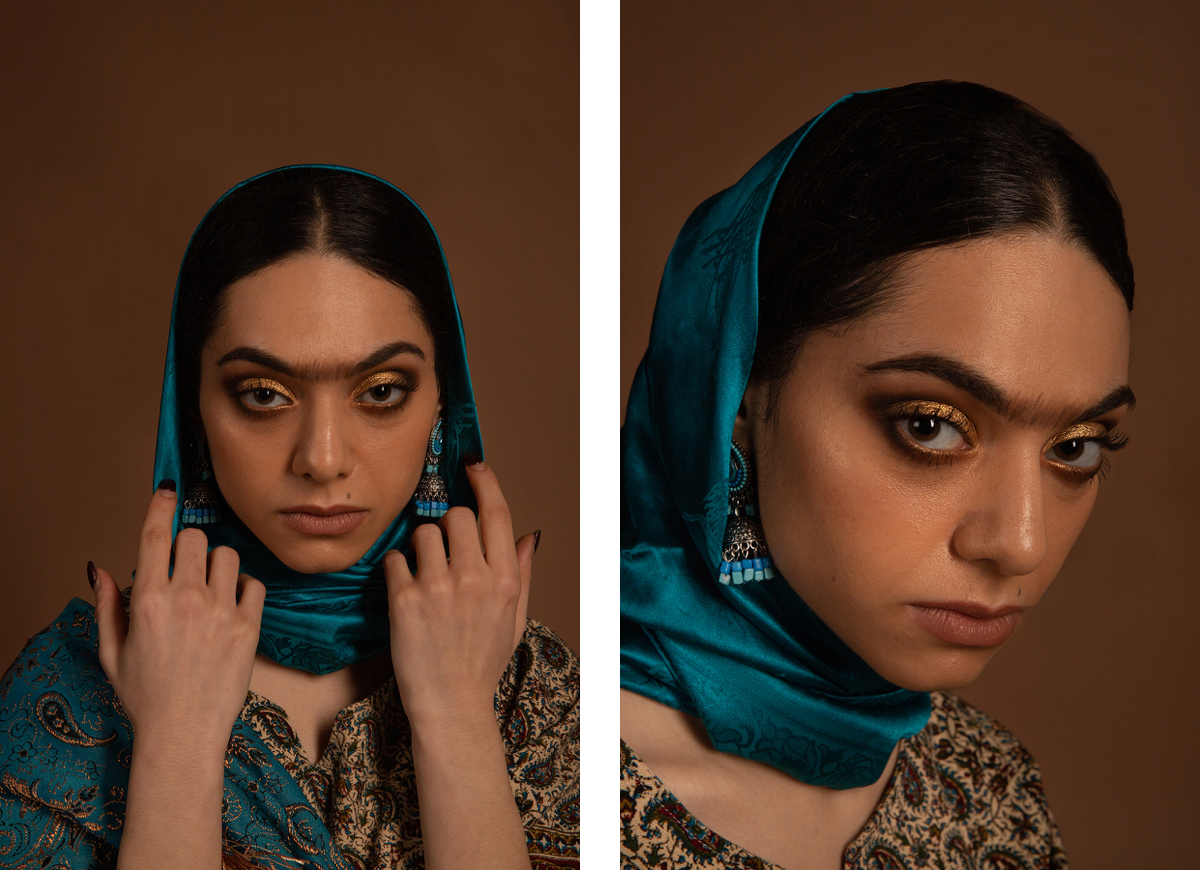
Model: Khody
This photoshoot is a successful example of three friends coming together, respecting each other’s respective cultures, and exploring culture and identity in a way that is non exploitive and non-appropriative. Can you tell us more about the considerations you all took to make sure this was the result?
Arwa: Me, being Libyan I have a very distinct culture to the overall middle eastern culture, although there are very big areas of overlap. I had to focus on highlighting Persian beauty specifically; which meant that I had to do some extra research and source original clothing and jewellery to ensure that Deba’s version was very defined at the end of this shoot. It also meant that I asked for advice and consultation from my assistant stylist just to ensure that my vision was culturally appropriate and suitable .
Deba: I’m Kurdish so it’s just my culture’s clothes really. I don’t want to see a white woman wearing it for an editorial or for Halloween or anything unless I’ve invited them to my wedding or something. It’s not cute.
Sally: We made sure to communicate with each other and listen to each other’s point of views. I listened to Deba, Arwa and Sahar and I asked a lot of questions about their culture and identity that I was curious about or lacked knowledge in.

Model: Khody
Sally, how did you approach this shoot as a photographer who is not from the MENA region?
Sally: As a photographer who’s not from the MENA region, I wanted to ensure that if not all, then most of my team was from the MENA region, including models and stylists. As someone who is going to document and capture this narrative, I wanted it to be as authentically expressed as possible. Through conversation with Deba, Arwa and Sahar I got a more in depth understanding of their stories and we were able to collaboratively create an editorial that depicts MENA beauty. Diversity in the fashion and creative industry is more than just having diverse models, it’s about having a diverse team behind it and having a BIPOC’s perspective. Most of fashion has had a long history of being captured by the white male eye and white male perspective.
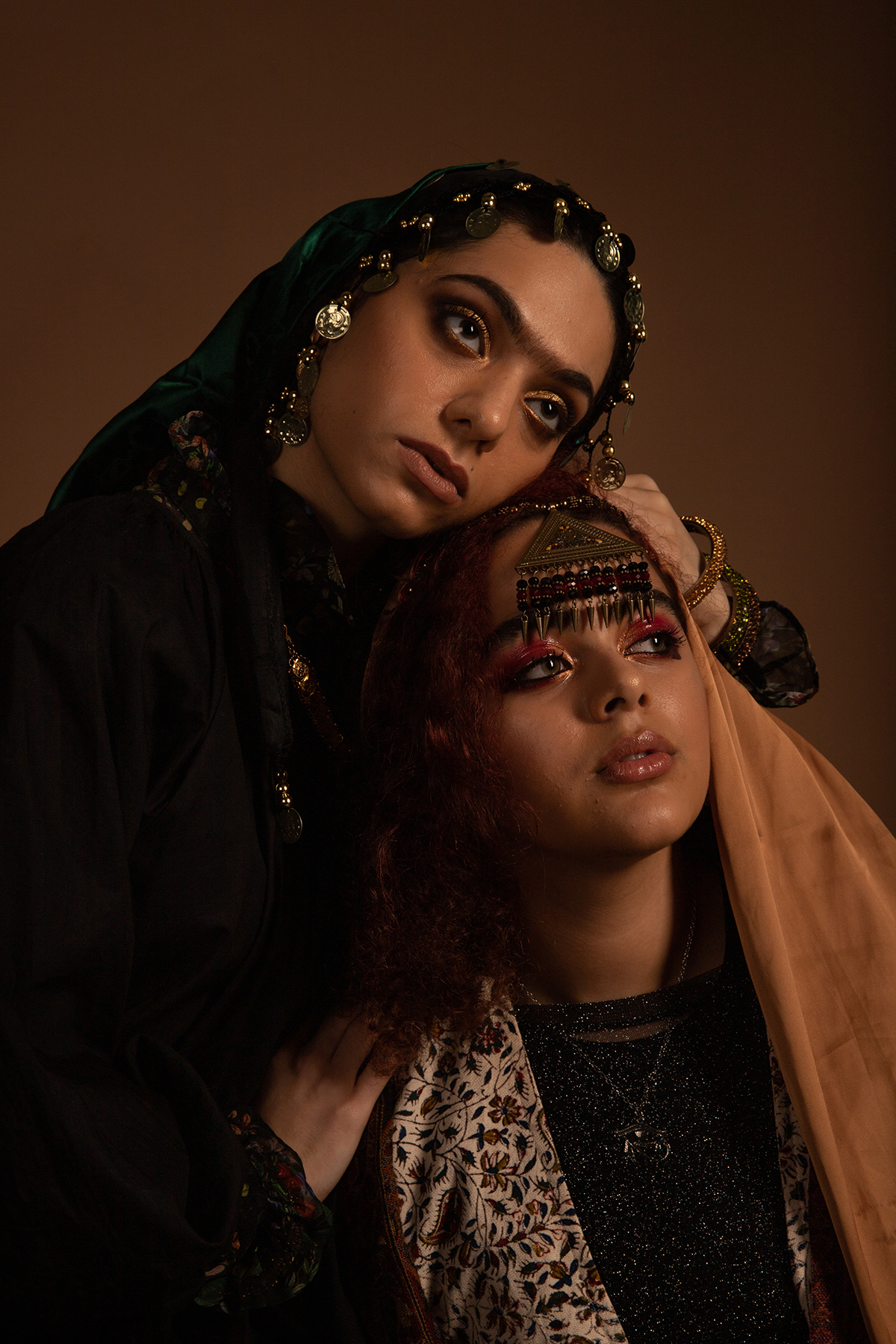
Models: Khody (left) and Lena (right)
Deba and Sally: It can be a very sensitive experience to explore an area that one was ridiculed for. It is also very intimate to allow someone else to document this exploration. What was the experience like for you both?
Deba: Sally is family. Like I said before, I trust her completely, this project has allowed us to bond further with her new understanding of my culture and vice versa.
Sally: I grew up with Deba and she’s one of my closest friends, I consider her as my own family. We’ve always worked together and taken photos together, but we’ve never taken a series of images that had a deeper narrative or purpose to them. Although we grew up together and I was next to her during these sensitive experiences, we never talked about it in depth until we grew up and gained knowledge in how to express ourselves about this topic. To capture how unapologetically confident Deba is now in her body and features, makes me so proud of her growth and it continues to inspire me to be confident with myself.
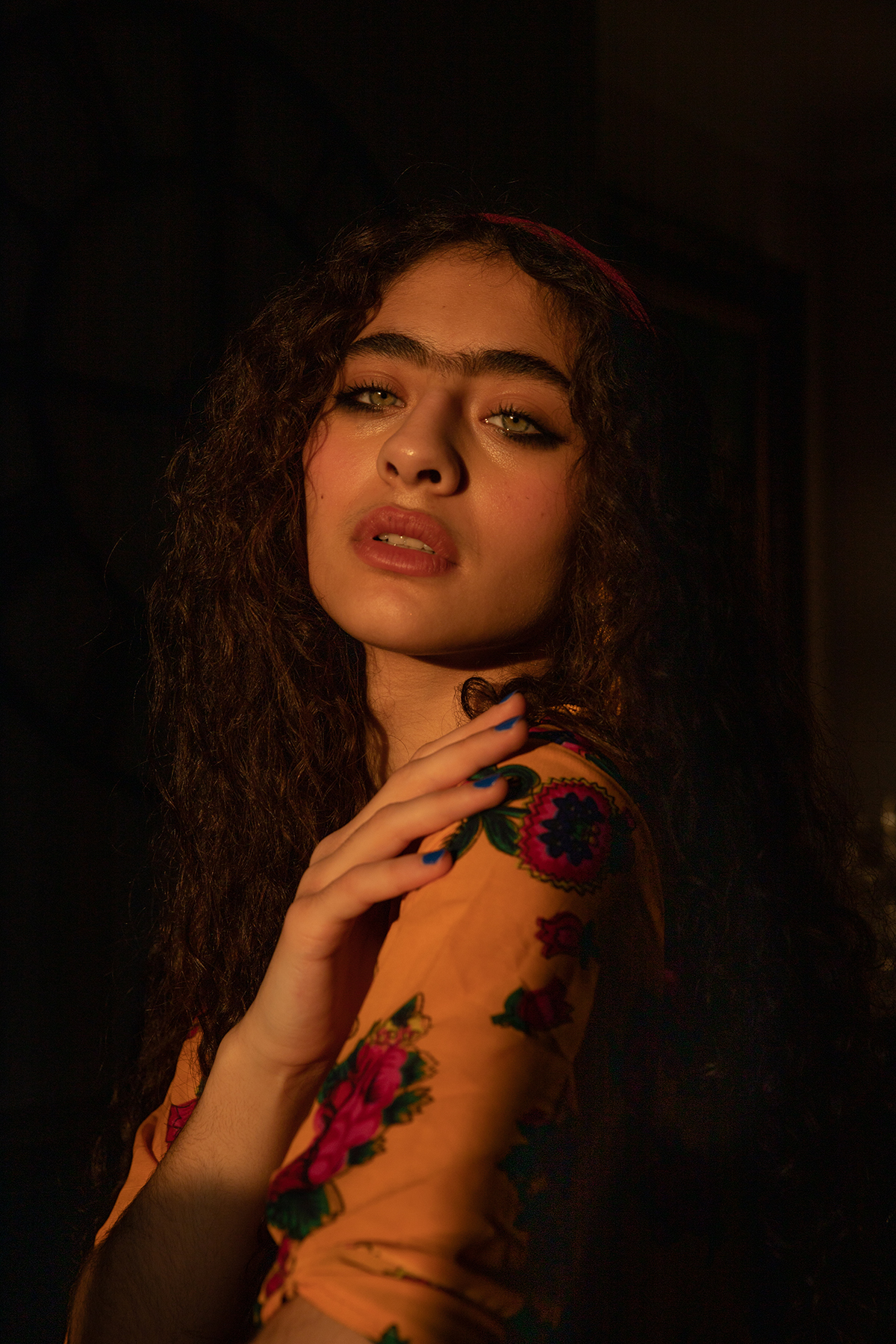
Model: Deba
What other projects (together or solo) have you all got lined up at the moment?
Arwa: at the moment we haven’t planned anything as of yet due to the whole Covid-19 situation and we are all doing our own thing, but I’m sure we will collab again soon.
Deba: Just trying to take each day as it comes, I don’t really know. We’ll see what happens in a year’s time ahah.
Sally: At the moment I’m focusing on opening a personal YouTube channel, WhatchuSayen, with the purpose to entertain and begin my experience in producing shows. It’s a dream I’ve wanted to pursue since I was 12. Photography-wise, I’m constantly exploring expression of love, relationships and sense of self through my personal craft.his is an on-going personal project.
_
Photography: Sally
Assistant studio photographer: Valentina
Styling: Arwa (to keep up with Arwa’s styling, click here)
Assistant Stylist: Sahar
Items sourced from Turkey, Iran, Egypt, and the Whitechapel Road market in London. (1st photo: yellow scarf from a market in Iran. 2nd photo: dress from a market in Kurdistan, scarf from a market in Cairo. 3rd photo:
dress from Kurdistan, jewellery from Whitechapel Road market. 6th photo: scarf from market in Cairo. 7th photo: scarf and jewellery from market in Cairo, waist jacket market in Iran, sparkly top from Stradivarius. 8th pic: coin scarf from Cairo, green scarf and bangles from Turkey, dress from Zara, necklace from Whitechapel Road market. 10th and 11th photos: scarf and earrings from Turkey, top and over shawl from Iran. 12th photo: coin scarf from Cairo, green scarf and bangles from Turkey, Dress from Zara, necklace from Whitechapel Road market.
Studio MUA: Julija
Models: Deba, Khody, Lena
For more interviews, click here.



